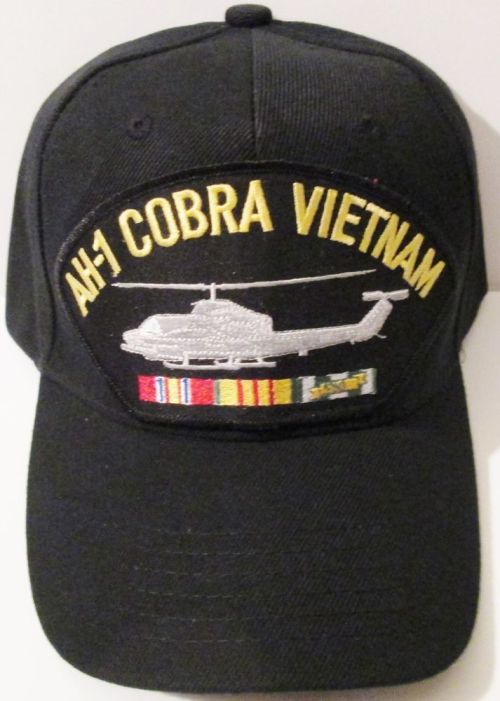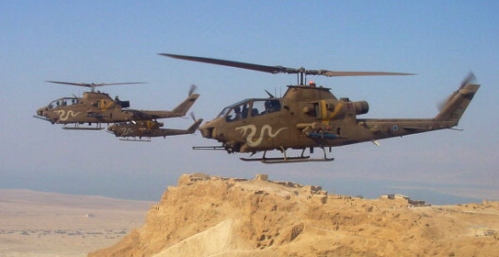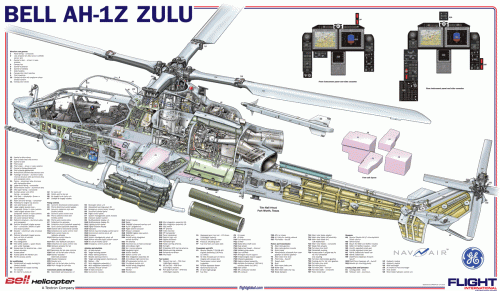Today’s installment of Warbirds brings us to the venerable AH-1 Cobra / Super Cobra / Viper. This iconic helicopter saw its debut in Vietnam and still serves to this day. The AH-1’s first flight took place on September 7th, 1965.
In the late 1950’s Bell Helicopter was committed to the US Army’s air cavalry concept. With the realization that the UH-1 “Hueys” were more vulnerable to North Vietnamese and even Viet Cong ground fire that first envisioned, it was decided that an armed escort was needed. To fill this role some UH-1s were upgraded to carry multiple machine guns and rockets. However, their light armor, slow speed, and open architecture meant that they were ill suited to close support and a would provide no permanent solution.
During the development of the “Huey”, Bell had begun work on designs for an attack helicopter. The D-255 “Iroquois Warrior” was their concept mockup that led to the building of the “Sioux Scout” built on the Model 47 airframe. It included many of the modern attack helicopter elements such as a tandem cockpit, weapons mounts on stub wings, and a chin mounted weapons system. However, the underpowered and undersized nature of the scout was deemed to be unsuitable. The Army decided to go with the Advanced Aerial Fire Support System (AAFSS). 10 years and millions later, the spawn of the AAFSS, the Lockheed AH-56 Cheyenne was cancelled.
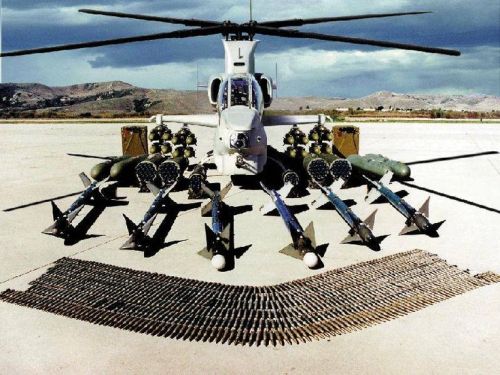
Despite not being chosen to compete for AAFSS, Bell went ahead with their development of a new attack helicopter based on many of the tried and true components in the UH-1. With AAFSS development proving costly and slow, the Army announced that they were looking for quick development of an interim gunship. Presented to the Army in 1965 as the Model 209, Bell’s prototype rolled out on September 3rd and was in the air just 4 days later. Only 7 months later the AH-1G was selected over the other competitors – the Boeing-Vertol ACH-47A, Kaman HH-2C Tomahawk, Piasecki 16H Pathfinder, and Sikorsky S-61.
With its own increasing use of helicopters, the Marine Corps was highly interested in adding a dedicated gunship to its growing fleet of support aircraft. The Corps, however, determined that they needed increased reliability and firepower. Out of these requirements Bell developed a twin-engine version designated the AH-1J. Further upgrades were ordered for future Army models that would include better avionics, more powerful engines, and integration of the TOW weapons system for greater anti-tank capability. These would lead to upgrades and designations of AH-1F, Q, and S.
Cobras of all sorts saw over a million operational hours during Vietnam. They would also be used in the Invasion of Grenada, Operation Just Hope, and the Invasion of Panama. By the 90’s, the Army began its transition from the Cobra to the newer AH-64 Apache. Though being phased out, Cobras still played a vital role in the Gulf War, Somalia, and even some humanitarian operations. the last Army AH-1 left service in March of 1999.
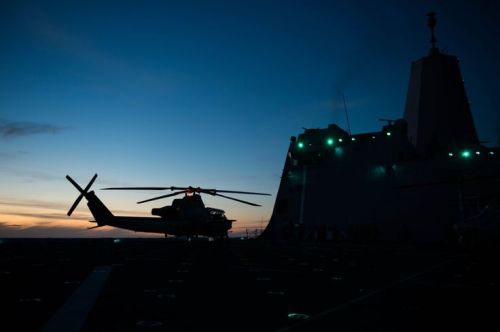
The Marine Corps was also interested in acquiring the Apache, but the request was denied by Congress. It was felt that the cost of creating a ship-based version would be too costly and that the Marine Corps would be the only customer for such a specialized craft. In response, a new wave of upgrades was applied to the fleet of Marine SeaCobras; turning them into SuperCobras. models AH-1T, T+, and W would result in greater reliability, more power, integration of more advance avionics, and the capability to utilize AIM-9 Sidewinder and AGM-114 Hellfire missiles
By the end of the 1990’s, another denial by Congress of the Marine Corps acquisition of Apaches led to a new development wave. Today’s AH-1Z Viper is the result. It features a new four-blade, composite rotor system for better battle damage tolerance, reduced noise, and increased flight characteristics. Additionally, the Viper has longer stub wings with an increased payload capacity. And, to fully take advantage of increased force integration and communication, a fully modernized suite of avionics and electronics was included. With these upgrades, the venerable AH-1 has continued to fill a critical vital role in both Iraq and Afghanistan during the Global War on Terror.
Over 2500 AH-1 aircraft of various models have been built since 1965. They have seen service on battlefields around the world and with the armed forces of the US, Iran, Israel, Japan, Pakistan, Taiwan, and Turkey. Today you will even find retired Army Cobras working in the US Forest Service and the Florida Division of Forestry for fire monitoring and suppression.
Below you can enjoy a clip of Cobras and Vipers in action.


